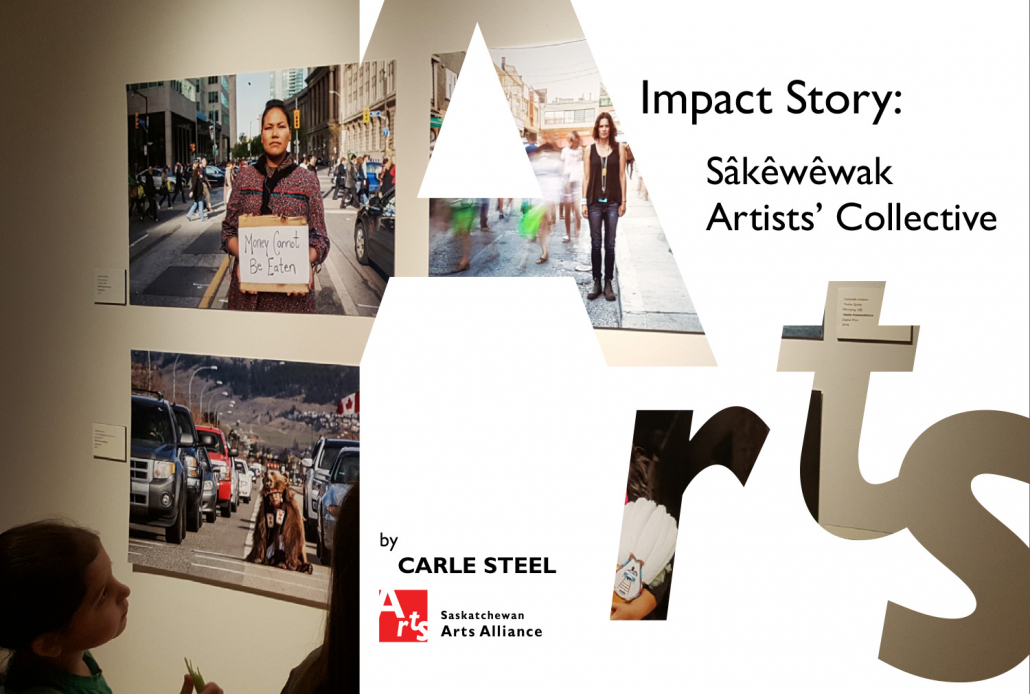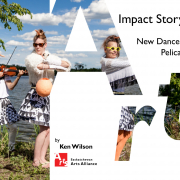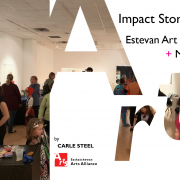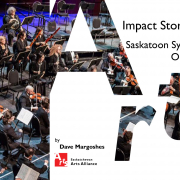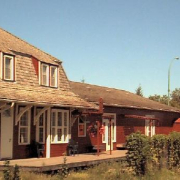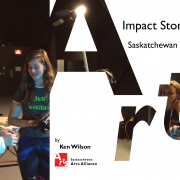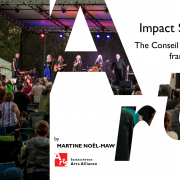Art Works – Sâkêwêwak Artists’ Collective
Art Works Series
Through events, mentorship, professional development and service to the community, Sâkêwêwak Artists Collective helps Indigenous artists and their work take their rightful place on the Canadian stage. This article is written by Carle Steel.
At Regina’s Performing Arts Centre, Sâkêwêwak Artists’ Collective’s new shared gallery space shows work by First Nations artists in recognition of Canada’s 150th, a difficult anniversary for many Indigenous people. In the auditorium, an interdisciplinary panel speaks to the thorny question of cultural appropriation.
The issue has been an open wound to Indigenous artists, from the longstanding colonial practice of stealing and locking away Indigenous art and artifacts in museums, to the more recent affronts by artists like Amanda PL, a non-Indigenous painter whose crude homage to the work of Woodlands master Norval Morrisseau gained national attention earlier in the year.
As a university student years ago, Sâkêwêwak’s Executive Director Adam Martin recalls playing with Morrisseau’s style, imitating the shapes and lines to tell a story of his own. “But all of Morrisseau’s shapes had meaning,” says Martin. “When I did it, it was empty. There was no connection there for me. And then I thought, I’m not Ojibway, I’m Mohawk. I executed this painting, but it was empty.”
Many years later, Martin is confronted daily by a dominant culture that takes and uses Indigenous art for its own purposes, without that self-reflection or insight. Martin’s goal is to redress those imbalances, through providing a platform for Indigenous artists and opportunities for them to be paid for their work.
There are many nuances to the appropriation of Indigenous art by non-Indigenous people, ranging from purloined histories and designs that have brought big money in the international marketplace, to the irritating but harmless dream catcher tattoo on a young person’s shoulder. Some situations can be handled with gentle education; others with outright rejection and social media campaigns.
“I know some of the reasons why it happens. People make mistakes, or they just don’t know,” he says. “I can see how people can go too far on the other side too. Who gets to make up the rules?”
Muddying those questions is the fact that when non-Indigenous people take up the styles of native artists, they usurp Indigenous artists’ place in the Canadian arts market, often winning prizes, grants, and gaining the praise that should rightfully go to Indigenous artists, many of whom are often too concerned with making art than promoting themselves to the wider Canadian public. There are hundreds of Indigenous artists of the Woodland school, who work without the benefit of gallery representation and national exposure.
“Why can’t people from that culture and those communities get the space and attention from the national press and galleries to sell their work? That’s why we’ve got to talk about these things.”
And we do talk about it more, thanks to Sâkêwêwak – and a vibrant, contemporary multidisciplinary arts community that is both audience and collaborator. From panel discussions to literary readings, and its highly successful annual Storytellers Festival, Sâkêwêwak brings an Indigenous edge to literary, visual, media and performing arts around the city of Regina and area First Nations communities, ensuring that the Indigenous arts gain that essential foothold in public consciousness.
